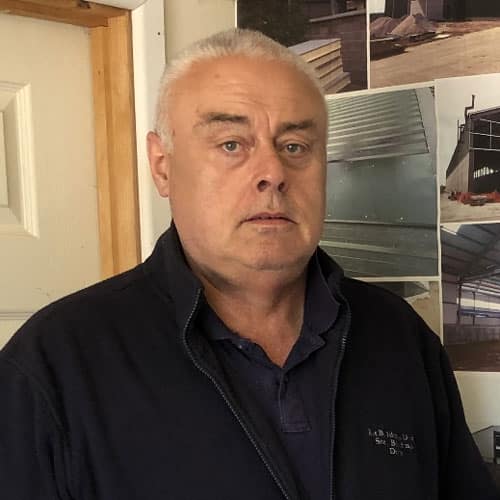
How to Maintain Your Steel Equestrian Building
Maintaining steel equestrian buildings creates a safe, clean and healthy environment for horses to thrive. Each small task, from clearing gutters to checking stall floors, plays a part in a larger system of care. This system ensures not just the longevity of the building, but the well-being of the animals and people who rely on it every day. We’ll outline everything you need to know about maintaining your equestrian steel building.
Preserving External Structural Integrity
Steel equestrian buildings need consistent care to stay strong and safe. The first step in maintaining a steel equestrian building is protecting its outer structure.
- Inspect Regularly
Regular inspections are essential to catch problems before they worsen. Walk around the entire exterior at least twice a year. Look closely at the roof, walls and foundation. Catching small issues early helps avoid bigger problems later.
Check for:
- Rust patches or corrosion
- Missing screws or fasteners
- Cracks in the walls or foundation
Bulging or misaligned panels - Water pooling near the base
These may seem minor but can lead to corrosion and structural damage. Moisture getting inside the building can also harm your horses’ health.
Leaks and dampness create an ideal environment for mould, mildew and bacteria. These conditions often lead to respiratory issues in horses.
Roof and Drainage Maintenance for Equestrian Steel Buildings
The roof is the most exposed part of a steel equestrian building. It protects against weather and helps regulate shade, airflow and insulation. So,if the roof fails, the internal environment suffers too.
- Inspect the Roof
Inspect your steel roof at least twice a year for rust, punctures, sagging panels and missing screws. Don’t forget the small stuff too. Leaves and twigs may seem harmless, but they clog gutters and cause water to pool.
- Keep Gutters Clear
It’s important to maintain your gutter system too. In equestrian facilities, well-designed gutter systems also help control runoff from areas with animal waste, keeping clean water separate from contaminated zones. Gutters need to be cleared regularly, especially in autumn when leaves fall.
Wall Cladding Care in Steel Equestrian Buildings
The appearance of your steel equestrian building’s cladding may seem purely cosmetic, but in reality, it plays a protective role. Dirty, damaged or poorly maintained cladding can cause structural issues and let moisture into the frame. Over time, dirt, algae and pollution build up on the panels. These eat into protective coatings and trap moisture against the surface, speeding up corrosion.
- Regular Cleaning
Cleaning should be part of your routine care. Start with a hose to remove dust and loose debris. Then use warm, soapy water with a soft brush or cloth to scrub panels. Always work top to bottom to avoid streaks. It’s best to avoid harsh chemicals and abrasive tools that may damage the protective finish.
- Inspect During Cleaning
During cleaning, take the opportunity to inspect the cladding closely. Look for cracks, splits or warping, particularly at panel seams or around fasteners. These gaps may let water seep behind the cladding, leading to internal damage. If cracks are found, seal them with an appropriate filler and replace loose or rusted fasteners.
Ventilation and Climate Control in Equestrian Steel Buildings
The air inside your steel equestrian building affects everything, including how your horses breathe, how materials last and how you manage heat and dampness.
- Control Moisture
Eurodressage reports that horses produce a lot of moisture and ammonia. Without airflow, damp air collects on steel surfaces and causes mould, corrosion and health risks.
- Use Proper Insulation
Warm air meeting cold steel causes condensation. Prevent this with quality insulation fitted tightly to walls and ceilings. This stops dew from forming.
- Choose the Right Ventilation
Not all farm ventilation suits horses. Systems for pigs or poultry often move air but don’t ensure quality. Horses need clean, fresh air to avoid respiratory issues.
Maintain Stalls and Floors
Stall maintenance is the backbone of a healthy equine environment. Dirty stalls can attract pests and produce high moisture levels that damage floors.
- Clean Daily
Remove soiled bedding, manure and leftover feed. Clean buckets and feeders each day. Disinfect with equine-safe products weekly or monthly.
- Deep Clean Regularly
Pressure wash corners, stall fronts and under mats. Check for damp areas and dry them immediately.
Dry floors help prevent rot, mould and disease. Clean and dry stalls also create a healthier environment for your horses.
Steel Equestrian Buildings at Kit Buildings Direct
At Kit Buildings Direct, we design, manufacture and supply of steel equestrian buildings across the UK. With over 50 years of industry expertise, we’ve built a strong reputation for delivering high-quality, CE-marked steel frame structures tailored to your exact needs.
All our buildings are UKCA certified, fabricated in our own workshop and backed by nationwide delivery and installation. Our bespoke steel structures are designed for durability, safety and the specific needs of horses and owners. Contact us today to learn more about our steel structures.

